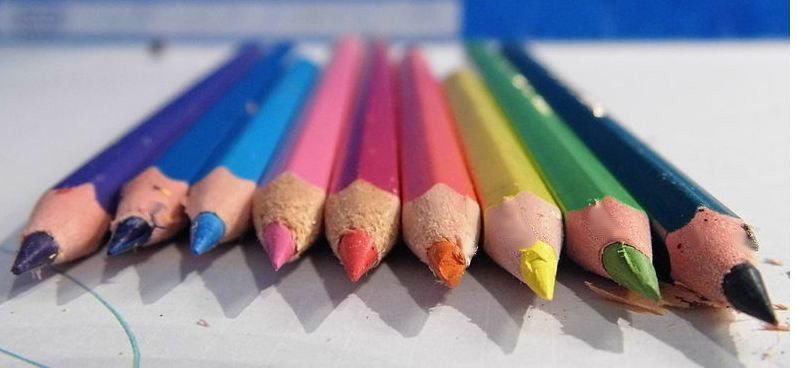When I was teaching first grade in the Greater Boston area, my Finnish wife, Johanna, loved to tell me about schools in Finland. Most of what she told me sounded mythical.
According to Johanna, Finnish children started first grade at age seven. Their school days were often just four hours long. Her close Finnish friend, a first grade teacher in Helsinki, worked about 30 hours each week, including prep time.
For years, I refused to believe my wife. My reality as an American first grade teacher was just too different from the one she described.
Many of my first grade students were a full year or two younger than their Finnish peers. Our school days lasted seven hours. Unlike Johanna’s friend, I was pulling in 50-hour weeks of teaching and planning. I just didn’t believe that another way was possible until I started teaching in Finland.
***




7 Comments
I am a home school mom in Texas and find the articles on Finland schools fascinating! I have one question after reading several articles. If these children are going to school half a day and coming home to an empty house where they have deeper more meaningful play, why is that? In America most children go home and watch TV, play video games or play on the computer or iPhone. How is Finland different with screen time?
Great question, Wendy! Screen time is a issue in Finland, too. But what I noticed at my Helsinki school — where 70% of first and second graders attend the subsidized “afternoon club” — is that most children are spending several hours of each weekday engaged in deep play. Some of these young children have their own cell phones, but many of them choose not to play games on them, so that they can play with their friends. This practice of “afternoon club” — where first and second graders spend their afterschool hours playing freely — is common throughout Finland (and often happening at the location of the school). In other words, some young Finnish children spend time alone at their homes (on their devices, perhaps), but many of them are playing with their friends through these clubs. FYI, I will be republishing a blog post soon where I’ll share what I learned when I spent an afternoon with first and second graders at my Helsinki school. But in the meantime you’d probably be interested in this recent article, “After the school day in Finland, play and more play”: http://youthtoday.org/2015/10/after-the-school-day-in-finland-play-and-more-play/. Thanks again for the question, and I’m glad to hear that you find these articles interesting!
I guess I just wanted to share my experiences even though this is probably a long and mostly useless comment.
As someone who has gone trough most of the Finnish system (I’m an uni student at the moment) I can tell that the 30% not going to the afternoon clubs don’t necessarily spend their afternoons home. When I was seven years old I was already practicing figure skating at least five times a week. So after school I got my travel card and hopped in the bus to get to the ice rink for practice. Usually between ice time and practice on dry land (where the break was sometimes two hours!) we engaged in free play outside, unsupervised. Then again it was the 90’s and Finnish economy wasn’t doing too good. jumping rope and local sports field were the only things we could play with. I had a phone but it had no games and it was only for calling my parents if I needed something. Very good thing to have even though it was never a problem when we had only the landline. I know many of my peers had some after school hobby where someone was looking after them until their parents got home.
To be honest I commuted to practice on my own before I was even forced to pay for the bus there (which happens at the age of 7). I read the post where you talked about how independent Finnish children are. Meanwhile I was shocked to hear that in other countries children weren’t free to do as they wanted. I would have felt like a prisoner if I was forced to live like kids in the US do. Sure taking the bus on my own during the dark and cold winter months wasn’t always fun but I’d still rather take that than give up my freedom and let parents or school bus or whatever take me everywhere with no me-time whatsoever. I like walking home on my own (even when it’s dark out there and my nose freezes). It’s kinda hard to explain but somehow those moments keep me sane. I guess it’s the famous connection between us Finns and nature.
What is a typical day in third grade?
Example
8-8:45 independent read
9-9:45 math
10-10:45 physical education
I would like to know this as well. How much of the education they receive is hands on learning? My daughter’s kindergarten class has such low hands on activities for learning (mostly worksheets), that’s what I’d like to know! Does Finnish education rely on worksheets as much as American teachers do??
I attended an “English speaking” school in Helsinki from 1956 to 1959 (grades 3-5) because my father had a diplomatic assignment there. In those days Finland was struggling to recover from the costs of WWII, and there was also a strong effort for universal literacy, so school was a bit different .The Finnish government invited a group of American nuns to establish an English Language school to help promote multilingual skills for Finnish students, at least I think that’s why they were there. The school day and calendar conformed to the Finnish calendar at the time. We were in school Mon through Sat, from 8:30 AM to 4 PM. However, we had 2 hours of non-academic activities every afternoon, and many breaks for outside play throughout the day. The American nuns were strict and some could be very cruel, so the days were not always happy ones for the kids. However, my experience of the rest of Finnish culture with respect to children was very much as you are describing. I could go anywhere in the greater Helsinki area alone on the bus or trams, and was always aware that the adults around me were looking out for me, and also ready to step in if I misbehaved (so I didn’t!) The Finnish people clearly valued children and showed much kindness, including providing free activities at community centers such as gymnastics and skiing. We children had our duties, principally to show respect to adults, but the rewards were great. When I returned to the United States I felt very mistrusted by most adults, whose behavior toward even their own children seemed distant. I was sad to have left such a nurturing community. I was also stranded in a boring suburb with no access to public transportation. TV became a much bigger part of my life.
Love this…. I loved outside of Lahti (Vierumaki) for a year.. and I’m now teaching K-1… It is a struggle every day for me to not feel these things you wrote about in this piece.